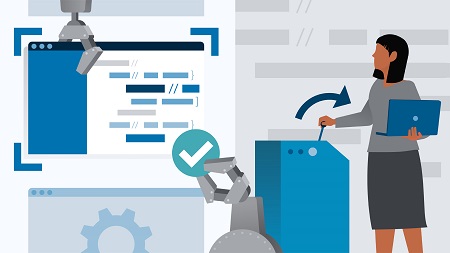
English | MP4 | AVC 1280×720 | AAC 48KHz 2ch | 1h 06m | 440 MB
Automation is about three things: balance, timing, and reaction. Selenium is the automation tool that allows you to combine all three aspects into testing. By integrating Selenium with popular languages like Java, Ruby, and Node.js, you can develop a custom test automation framework suitable for testing the most complex web and mobile apps. In this course, instructor Jain Waldrip walks you through the creation of a simple automation framework with each of these three languages. Learn how to install the necessary tools—including the dependency manager, unit test framework, and libraries for each language—and start writing tests. The end result is a viable MVP you can use to evaluate your options or develop into your own custom solution.
Topics include:
- Choosing a Selenium framework
- Managing Ruby packages with Bundler
- Testing with Watir
- Managing Node packages with npm
- Building tests with Mocha and Chai
- Testing with wdio
- Managing Java packages with Maven
- Building tests with JUnit
- Testing with Selenide
Table of Contents
1 Creating automation
2 Getting started What you should know
3 Creating automation frameworks
4 Choosing a Selenium framework
5 Getting started with Ruby
6 Managing packages with Bundler
7 Installing Bundler gems
8 Introducing RSpec
9 Introducing Watir
10 Testing with Watir Navigate and wait
11 Testing with Watir Inputs
12 Testing with Watir Assertions
13 Getting started with Node.js
14 Managing packages with npm
15 Introducing Mocha and Chai
16 Introducing wdio
17 Testing with wdio Navigate and wait
18 Testing with wdio Inputs
19 Testing with wdio Assertions
20 Getting Started with Java
21 Managing packages with Maven
22 Introducing JUnit
23 Introducing Selenide
24 Testing with Selenide Navigate and wait
25 Testing with Selenide Inputs
26 Testing with Selenide Assertions
27 Next steps
Resolve the captcha to access the links!